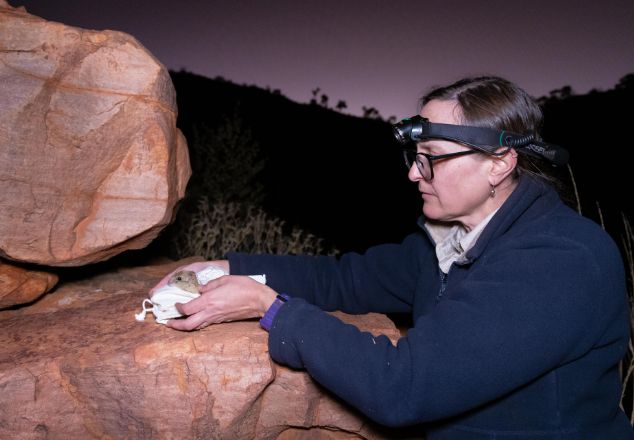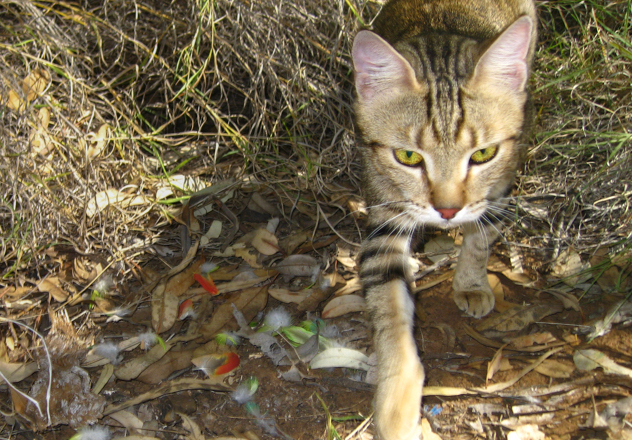The Central Rock-rat is one of five native Australian rock-rat species. This small rodent lives on just a few high mountain ridges in Central Australia. Only coming out at night (nocturnal), the species can often be difficult to spot, but for those lucky enough to have had a glimpse this species, their thick furry tail and bright eyes are distinguishing features sight.
Although once found across a broad swathe of Central Australia, the Central Rock-rat has disappeared from over 95% of its pre-European distribution. The Central Rock-rat is a species on the brink of extinction, is Critically Endangered and has been identified as a species in need of urgent protection within a feral predator-free site.

 Brad Leue/AWC
Brad Leue/AWC
AWC carried out a bold, week-long operation in July 2022, to translocate and reintroduce 58 Central Rock-rats from five sites across Tjoritja/West MacDonnell National Park to the 9,450 hectares feral predator-free fenced area at Newhaven Wildlife Sanctuary on the traditional lands of the Ngalia-Warlpiri/Luritja people.
In addition to the rock-rats released at Newhaven, 16 individuals were taken to Alice Springs Desert Park, where they became the founders of a new captive breeding program which has since successfully produced more pups. In May 2023 nine individuals from the breeding program were released at Newhaven.
The translocation to Newhaven, coupled with the captive breeding colony, will help to secure the conservation of the species. If the new population becomes established throughout the rocky ranges, it is predicted that Newhaven could support a population of around 800 Central Rock-rats in ideal conditions.
 © AWC
© AWC
Ranging from approximately 10-15cm in size and weighing as little as 50-120g, the Central Rock-rat is easy prey to introduced predators. As a result, feral cats are the primary driver behind the decline in the rock-rat population, along with altered fire regimes.

Ecology
Central Rock-rats are found in complex rocky habitats where they forage for seeds at night. Seeds make up 72% of their food intake and they favour areas that have been burnt in the past 5 years that are abundant in important food plants. They spend the day sheltering in rock-crevices, which provide a safe and comfortable place to rest.
Range and Abundance
Once found across a broad swathe of Central Australia, the Central Rock-rat has disappeared from over 95% of its pre-European distribution. After a sighting in 1960, the species seemed to have disappeared and was considered likely extinct for nearly 30 years.
A small population was discovered near Ormiston Gorge in Tjoritja/West MacDonnell National Park in 1996. Over the last two decades, this population has fluctuated according to weather patterns – booming during times of higher rainfall and reducing during times of prolonged drought.
Donate to help protect the Central Rock-rat and other endangered species from extinction
Donate NowNewhaven Wildlife Sanctuary is one of Australia’s largest non-government protected areas, offering beautiful scenery and a diverse mix of arid...
Weighing less than a golf ball, the Eastern Pygmy Possum is one of the smallest possums in the world.
The Malleefowl is a large ground-dwelling bird and one of only three mound-building bird species in Australia.
AWC helps protect a population of Kangaroo Island Dunnarts on Kangaroo Island.